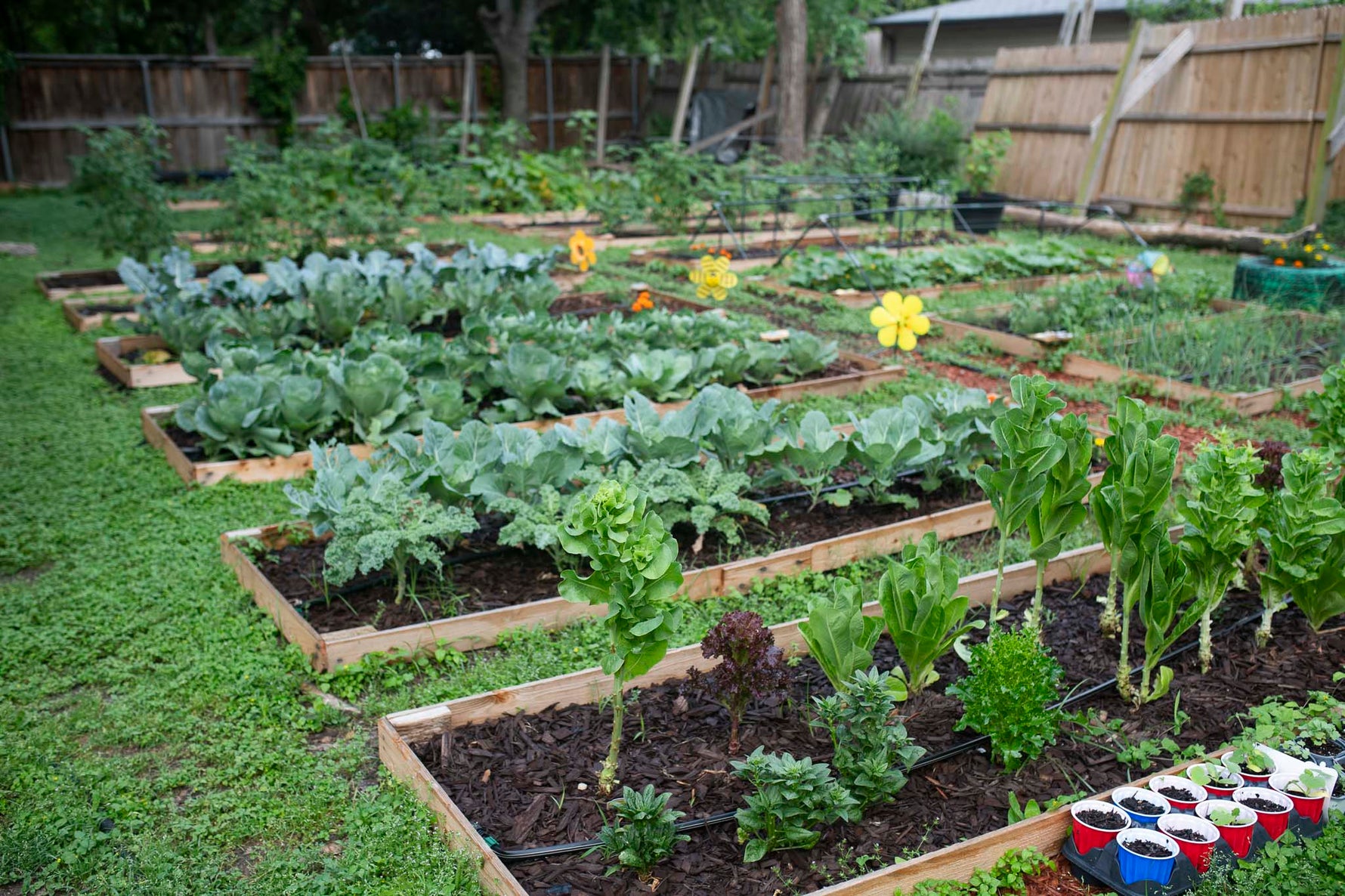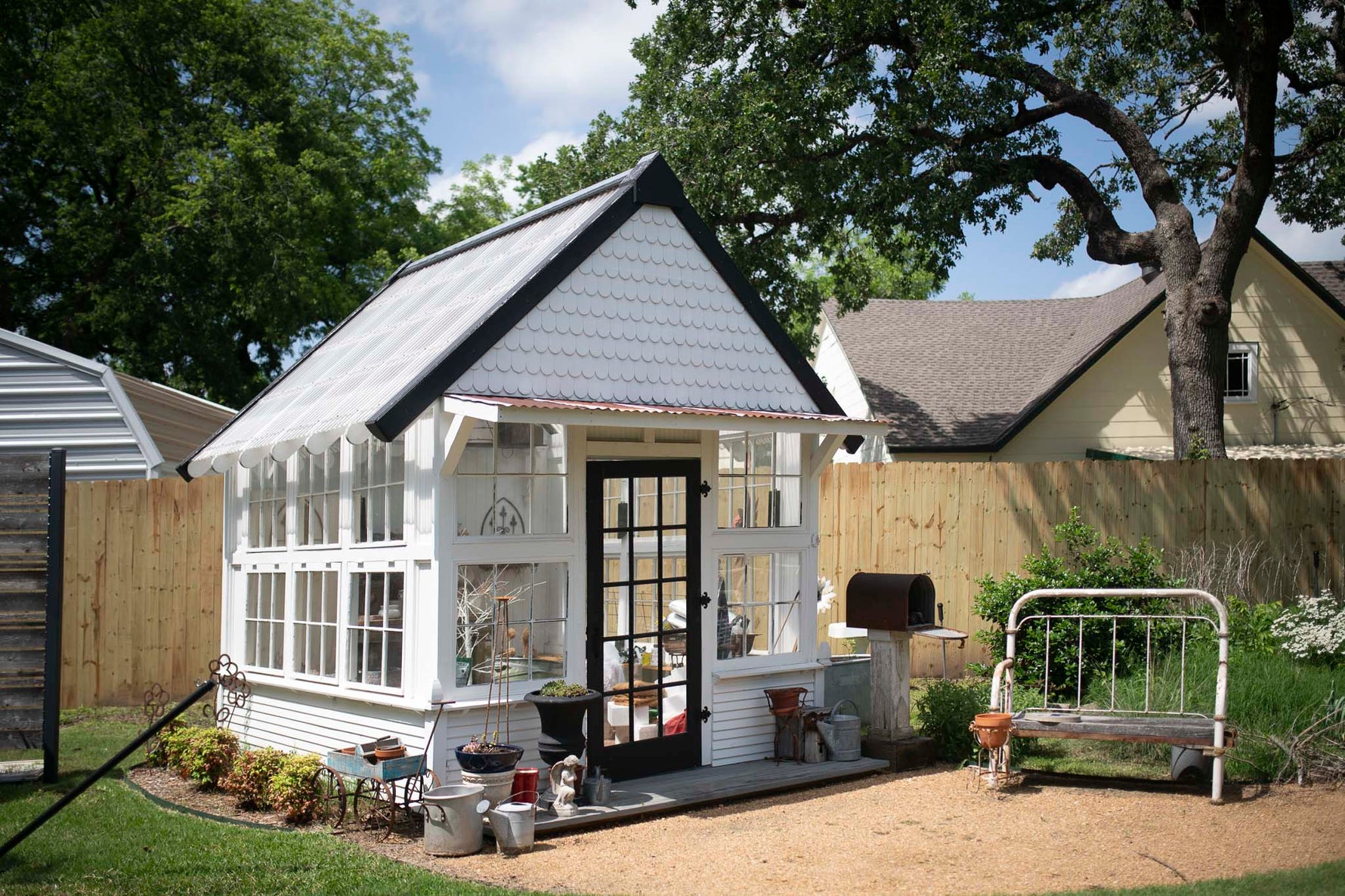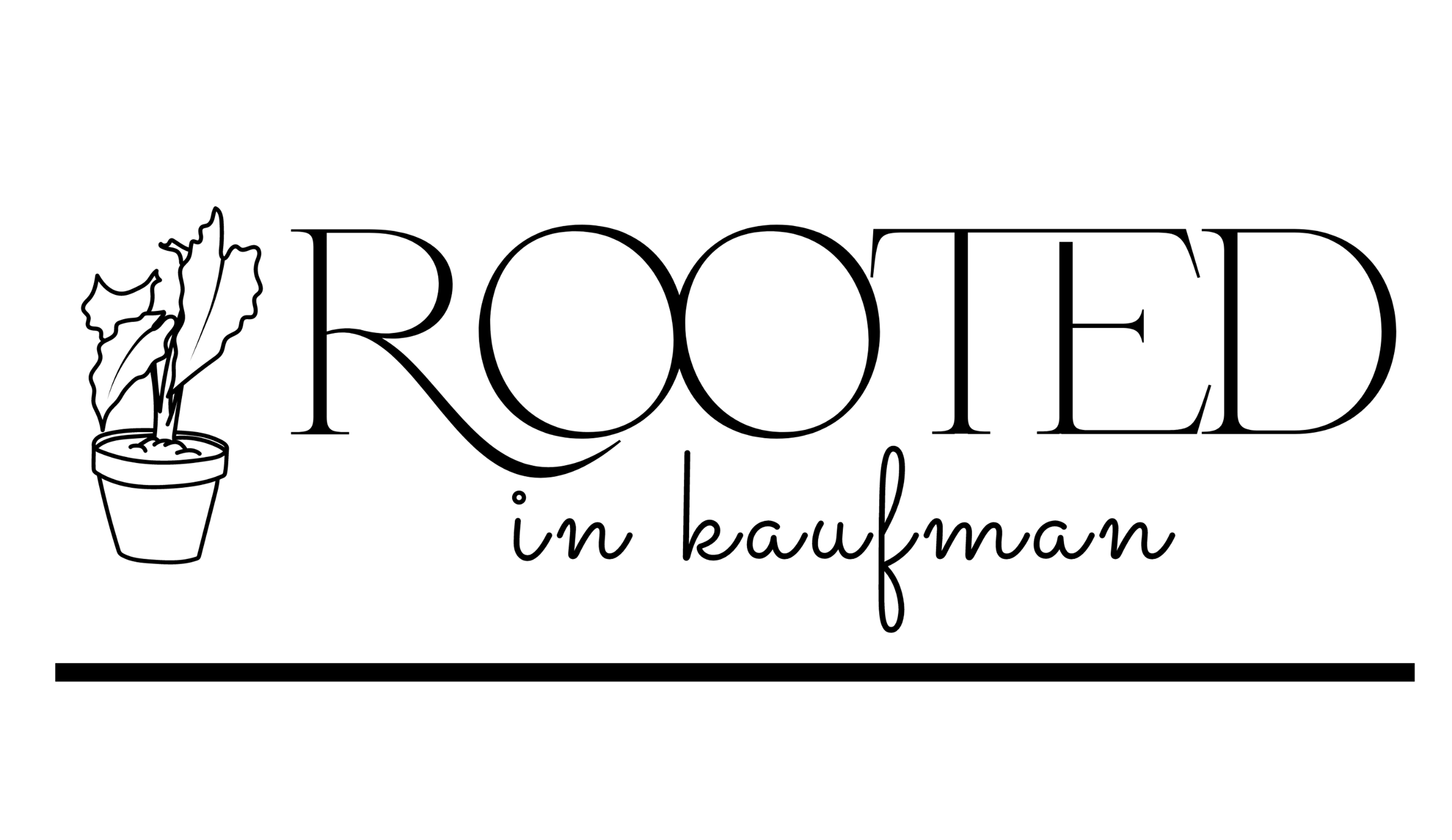News

News
Growing Independence: Matt Jaremko’s Backyard Mini Farm
by Emily Bussey on May 20, 2025
Growing Independence: Matt Jaremko’s Backyard Mini Farm
By Rooted in Kaufman
Step into Matt Jaremko’s backyard and you’re instantly transported to something between a homestead and a living classroom. Tucked into a quiet corner near Kaufman County, Matt has transformed his one-third-acre lot into a thriving, food-producing backyard farm—complete with vegetables, herbs, blackberries, and yes, even chickens.
This isn’t just gardening—it’s a full-on mission for self-sufficiency.
🥬 From Lettuce to Livestock: A Backyard Tour
Matt’s garden is carefully laid out in zones, with crops growing directly in the ground, in raised beds, grow bags, and even repurposed containers. It’s organized, productive, and deeply intentional.
“We’ve got lettuce, spinach, kale, collard greens, broccoli, cauliflower, bell peppers, tomatoes, hot peppers, squash, zucchini, cucumbers… the list goes on,” Matt says. “And the sweet potatoes? Those might be the easiest thing out here.”
His tomato beds are especially impressive, featuring both classic and cherry varieties for quicker harvests. Bell peppers and hot peppers are growing side by side, while squash and corn mingle in what he proudly calls his “Three Sisters” bed—a time-tested companion planting method used by Indigenous farmers where squash, beans, and corn grow together and help one another thrive.
🍓 Soil, Seeds, and Smart Strategy
Matt doesn’t just dump soil into boxes. “I’ve worked the actual soil underneath the beds,” he says. “Manure, compost, additives—every plant wants something different.” He’s done his homework, tailoring the soil composition to match each plant’s nutritional needs.
He starts many crops from seed—beans, onions, corn—while others come from starter plants. “I’ve got a mix,” he explains. “The goal is always to keep things growing and rotate with the seasons.”
He’s even growing blackberries from a plant he put in the ground five years ago. “It went crazy,” he laughs. “We had to take down the old fence because the vines took it over.”
🌞 Water, Bugs & Texas Heat: Real-Life Garden Lessons
Texas gardeners know water is everything, and Matt’s no exception. He installed a drip irrigation system and supplements it with hand watering. “The system helps, but I still like to water by hand so I know it’s getting where it needs to,” he says. “And in the summer, I’ll put up a 20-by-26 foot shade cloth to protect the more tender crops.”
For pest control? It’s essential oils. “I use rosemary oil, mint oil—natural stuff that works.”
And yes, there are marigolds and rosemary planted throughout the garden to deter pests, especially around his tomatoes.
🐔 Beyond Veggies: Chickens & Big Plans
The backyard also hosts chickens—just another step in Matt’s journey toward sustainable living. “Eventually I want a greenhouse. Maybe even a small farm,” he says with a grin.
The greenhouse is already in the works: a 20-by-15-foot structure where he’ll start seedlings in the early spring. “I started a bunch indoors this year, but I need more room. The greenhouse will be a game changer.”
🥗 Taste the Difference
When asked what tastes the best fresh from the garden, Matt doesn’t hesitate: “The lettuce. Hands down. It’s not bitter like the store stuff. And the herbs—we’ve already cut enough cilantro to make back what we spent.”
His wife takes fresh lettuce to work weekly, and with multiple harvests already behind them, the garden’s paying off in more ways than one.
🌱 Garden Wisdom from a Backyard Farmer
So what’s Matt’s advice for someone starting their own backyard farm?
“Water. That’s the biggest thing. In Texas, if you can’t keep it watered, it won’t grow.”
His second tip? Don’t be afraid to experiment. Raised beds, grow bags, direct planting—it’s all on display in his backyard, and each method has its place.
Most of all, Matt says it’s about learning as you go, and not getting discouraged. “Some stuff works, some doesn’t. You figure it out.”
From romaine to rosemary, Matt’s backyard is proof that with a little land, a lot of effort, and a bit of research, anyone can grow a slice of independence. And in a world of rising grocery bills and disappearing connection to our food—his message couldn’t come at a better time.

News
A Garden Grows in Kaufman: Cottagecore Dreams and Coneflower Love
by Emily Bussey on May 07, 2025
A Garden Grows in Kaufman: Cottagecore Dreams and Coneflower Love
Last week, we had the joy of stepping into a local gardener’s personal paradise—and what we found was more than just a backyard. It was a living, blooming love letter to Texas native plants, vibrant color, and the peace that only gardening can bring. Cindy Rich welcomed us into her world, where coneflowers reign, butterflies are welcome guests, and every season brings something new to admire.
Coneflowers, Salvias & the Joy of Trial and Error
“I love coneflowers,” Cindy says with a smile, pointing out her collection of cream, red, and yellow varieties. “They’re not quite as hardy as the classic pink, but they do well.” Her garden is full of similar success stories—plants that thrive after a little patience and experimentation.
She speaks warmly about salvia, yarrow, and Black-eyed Susans, which are all making a strong comeback in her beds. “Some things I’ve tried didn’t do well, but then others just took off! It’s a lot of trial and error.”
Cottagecore, the Texas Way
Cindy’s gardening approach leans into that dreamy, layered “cottagecore” vibe—with a practical Texas twist. “I try to mix it up so I always have something blooming,” she says. “And I like to pack it in—that way I don’t have to weed as much!”
Her go-to plants for that natural, ever-changing look include:
Coneflowers (especially the red and cream types)
Yarrow in white, yellow, and red
Salvias of all kinds
Black-eyed Susans
Pink Muhly Grass
Lantana (when it’s happy)
Pink Muhly Grass, she says, is the star of the fall. “They get big, fluffy pink plumes. They’re absolutely stunning. I have them everywhere!”
Planting with Pollinators in Mind
This garden doesn’t just look good—it supports local pollinators, too. Cindy makes space for butterflies by growing fennel each year—not for cooking, but for the caterpillars.
“Who eats fennel? Nobody. But the swallowtails love it.”
She’s had chrysalis after chrysalis appear on her plants and gets a thrill every time butterflies flutter through her yard. There’s also a giant purple hyacinth bean vine that trails up an arbor and spreads with wild abandon—“It’s like a weed almost, but gorgeous,” she laughs.
Tips from a Backyard Pro
When asked how she plans out her garden, Cindy is refreshingly honest: “It’s mostly trial and error. I move stuff if it’s not happy.” She pays attention to sunlight, reads plant tags, and isn’t afraid to shift things around—sometimes three times—until they’re thriving.
“Sometimes plants don’t get big their first year, then suddenly they explode and cover everything!”
Her biggest challenge? Weeds. “We’ve tried a lot—Roundup, pulling—but they always come back.” Still, she says, they manage to get it done every year.
For the Love of Gardening
Cindy’s garden didn’t happen overnight. They bought the house in 2020, right before the world shut down. After a year and a half of renovations, she finally turned her attention to the yard. Today, it’s a peaceful haven filled with beauty, butterflies, and a whole lot of heart.
“I think that’s when God speaks to me the most—when I’m out in the garden and everything slows down.”
Inspired to start your own Texas cottagecore garden?
Come visit us at Rooted in Kaufman! We’ve got a huge selection of native perennials, colorful hanging baskets, shade trees, and even houseplants we grow ourselves—so you can plant with confidence. Ask us about pollinator-friendly plants and get expert advice from real gardeners who love what they do.
Follow us on Facebook to see more garden tours and get local planting inspiration!
